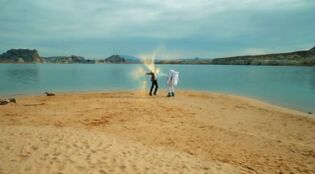Still point in time: Difference between revisions
No edit summary Tag: 2017 source edit |
Meganerd18 (talk | contribs) No edit summary Tags: Reverted Visual edit |
||
| Line 3: | Line 3: | ||
Instead, the Silence merely assumed the Doctor died at Lake Silencio without realising he could and would find a way to fake his death thanks to the time-travelling vehicle the ''[[Teselecta]], ''allowing him to survive. ([[TV]]: ''[[The Wedding of River Song (TV story)|The Wedding of River Song]]'') | Instead, the Silence merely assumed the Doctor died at Lake Silencio without realising he could and would find a way to fake his death thanks to the time-travelling vehicle the ''[[Teselecta]], ''allowing him to survive. ([[TV]]: ''[[The Wedding of River Song (TV story)|The Wedding of River Song]]'') | ||
Though the nature of a still point in time was never defined, it could be inferred that it's a point in time and space where nothing of note happens at all, eliminating variables that might make an event a flux point instead of fixed. | |||
[[Category:Temporal theory]] | [[Category:Temporal theory]] | ||
Revision as of 03:32, 16 August 2023

According to Dorium Maldovar, still points in time made it easier to create fixed points in time. The Kovarian Chapter of the Silence used one such point in space-time — 5:02 PM on 22 April 2011 by Lake Silencio — to make the Eleventh Doctor's supposed death there a fixed point.
Instead, the Silence merely assumed the Doctor died at Lake Silencio without realising he could and would find a way to fake his death thanks to the time-travelling vehicle the Teselecta, allowing him to survive. (TV: The Wedding of River Song)
Though the nature of a still point in time was never defined, it could be inferred that it's a point in time and space where nothing of note happens at all, eliminating variables that might make an event a flux point instead of fixed.
